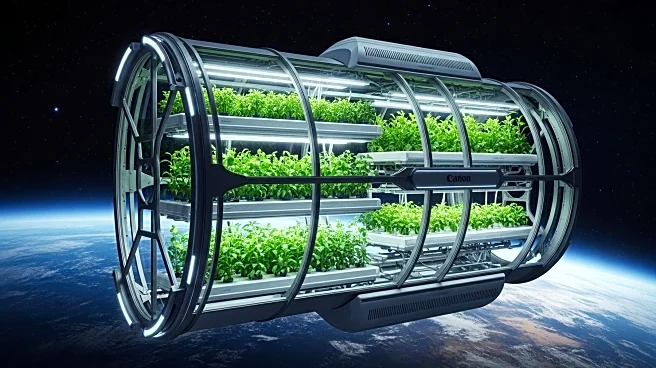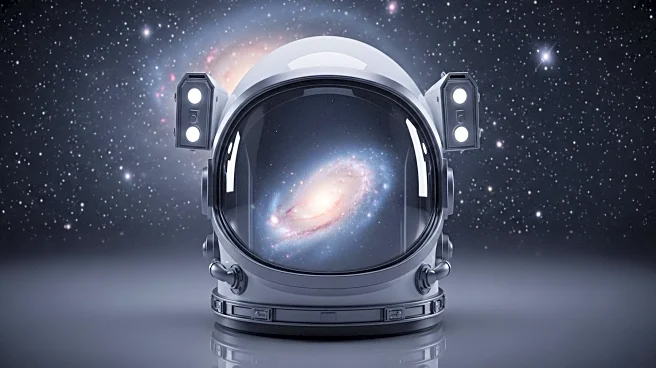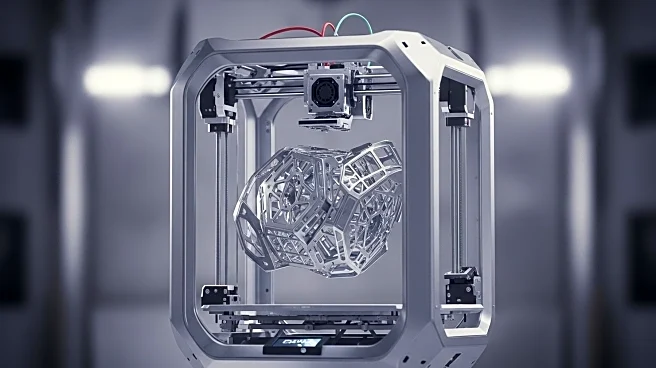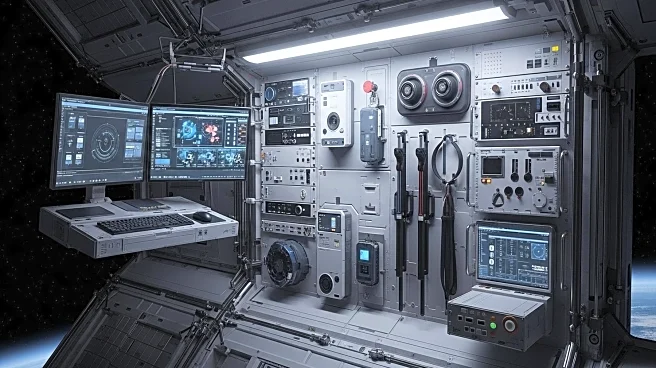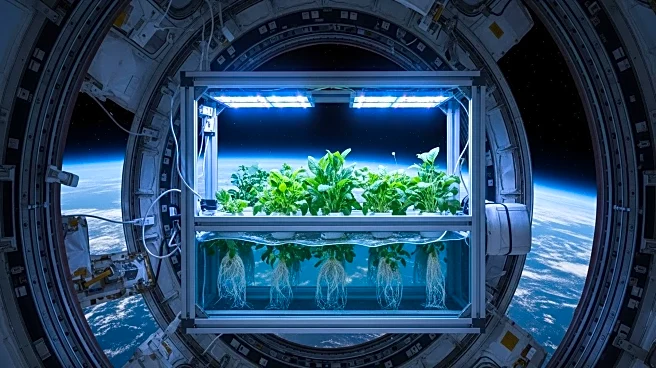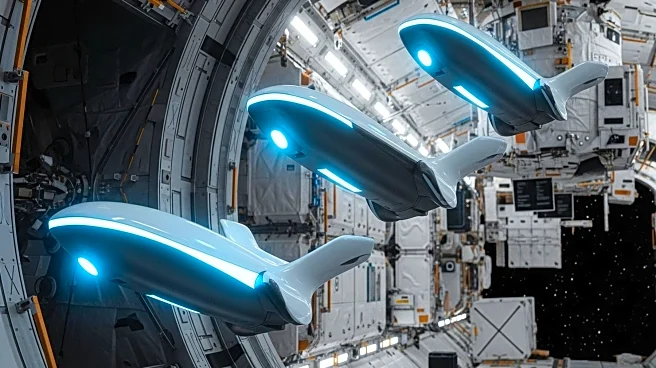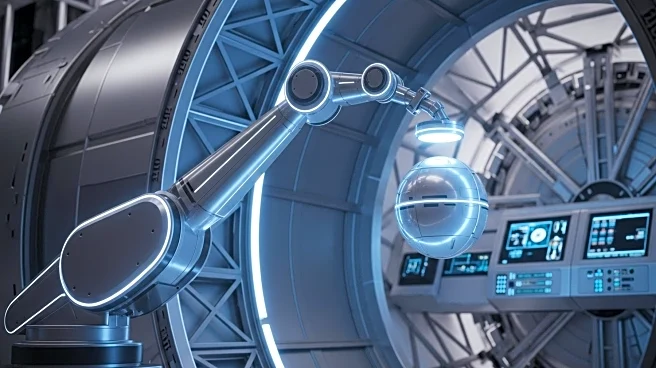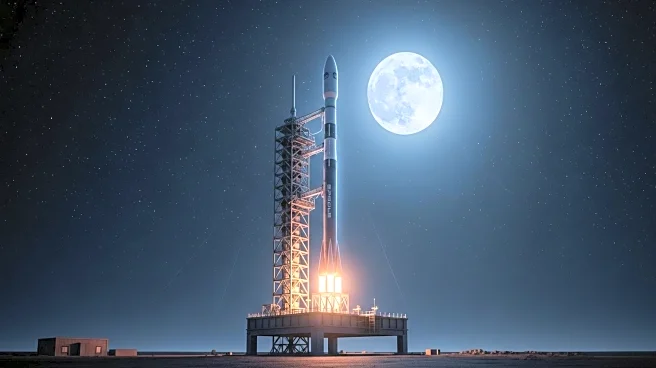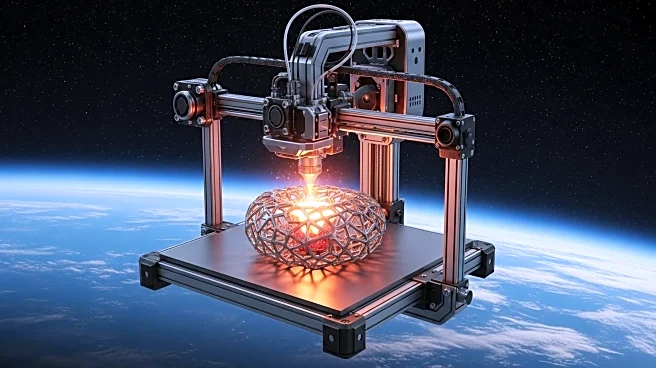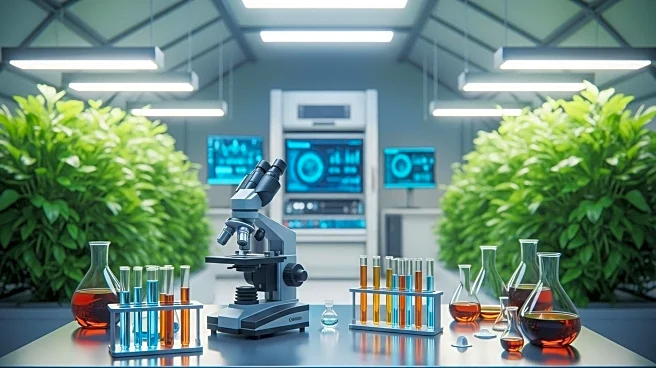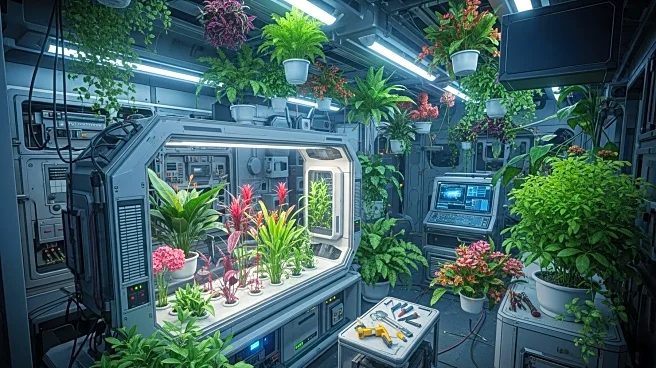What is the story about?
What's Happening?
NASA has partnered with AeroFarms to conduct a vertical farming experiment aboard the International Space Station (ISS), focusing on growing leafy greens under microgravity conditions. This initiative is part of a broader effort to advance space agriculture, which aims to develop sustainable food production systems for long-duration space missions and extraterrestrial colonization. The experiment has shown promising results, with successful growth cycles and nutrient retention comparable to crops grown on Earth. Additionally, SpaceX is collaborating with private agritech firms to test automated hydroponic systems in orbital habitats, aiming to optimize water and nutrient delivery in zero gravity. These efforts are part of a growing interest in space agriculture, driven by the need for reliable food supply for astronauts and the potential for human space exploration missions to the Moon and Mars.
Why It's Important?
The development of space agriculture is crucial for ensuring food security and supporting human survival in space. As interest in human space exploration grows, including missions to the Moon and Mars, the ability to produce food in space becomes increasingly important. Space agriculture technologies, such as hydroponics, aeroponics, and vertical farming, offer solutions for growing crops in controlled environments, which are essential for long-term space missions. These advancements not only enhance crop yield and resilience but also improve nutritional quality under space conditions. The integration of automation and AI-based monitoring systems further enhances efficiency and resource utilization, making space agriculture a pivotal area of research and innovation in space exploration.
What's Next?
Future developments in space agriculture are likely to focus on enhancing the efficiency and sustainability of food production systems in space. Continued research on plant growth under microgravity, radiation exposure, and limited resources will provide critical insights for future long-term missions. Emerging partnerships between space agencies and commercial spaceflight companies are expected to expand experimental opportunities and infrastructure, accelerating innovation and commercialization. As space agriculture technologies advance, they may also find applications on Earth, particularly in areas facing food security challenges. The ongoing collaboration between aerospace agencies, universities, and private startups will play a key role in driving these advancements.
Beyond the Headlines
Space agriculture not only addresses the immediate needs of food production for space missions but also has broader implications for sustainable living in extraterrestrial environments. The development of closed-loop life support systems and self-sustaining habitats in space could pave the way for future colonization efforts. Additionally, the research and technologies developed for space agriculture may contribute to addressing food security challenges on Earth, particularly in regions with limited resources. The ethical and cultural dimensions of growing food in space, including the potential impact on human diets and agricultural practices, are also areas of interest for future exploration.
AI Generated Content
Do you find this article useful?
